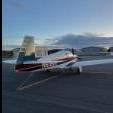Single pilot IFR without autopilot
-
Members Online
- FlyingScot
- Aaviationist
- J Bird
- dkkim73
- kortopates
- ericrynehess
- Taz
- hubcap
- PT20J
- 1980Mooney
- EricJ
- 201Steve
- AndreiC
- Greg Ellis
- jjvanl
- Ibra
- AdamJD
- PeterRus
- kkelley85
- Deb
- wburger1
- Blaze
- Vance Harral
- PeteMc
- 201Mooniac
- Hank
- KSMooniac
- alextstone
- Ethan
- Utah20Gflyer
- midlifeflyer
- KLRDMD
- ta2too
- Rmnpilot
- TaildraggerPilot
- Justin Schmidt
- TheAv8r
- dzeleski
- M20E for me


Recommended Posts
Join the conversation
You can post now and register later. If you have an account, sign in now to post with your account.